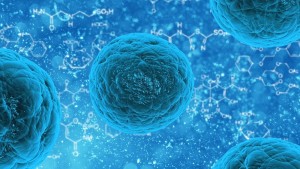- An autologous transplant uses a person’s own stem cells.
- An allogeneic transplant uses stem cells from a donor whose human leukocyte antigens (HLA) are acceptable matches to the patient’s.
A stem cell transplant is a procedure during which doctors either replace diseased or ineffective stem cells with healthy new stem cells or allow high-dose treatment for lymphoma, some testicular cancers, and other diseases. It is often lifesaving for patients with blood cancer and serious blood disorders.
 A person may need a transplant for a few different reasons: when their body cannot make the blood cells that it needs, because their bone marrow or blood cells have become diseased and need to be replaced, or because they have a disease that is treated with high doses of chemotherapy and/or radiation, which destroys cancerous and stem cells at the same time.
A person may need a transplant for a few different reasons: when their body cannot make the blood cells that it needs, because their bone marrow or blood cells have become diseased and need to be replaced, or because they have a disease that is treated with high doses of chemotherapy and/or radiation, which destroys cancerous and stem cells at the same time.
Two of the most common types of stem cell transplants are autologous and allogeneic transplants. Both kinds of stem cell transplantations are a common treatment option for cancers such as leukemia, lymphoma, and multiple myeloma.
Autologous versus allogenic transplant
An autologous transplant uses a person’s own stem cells. In this procedure, stem cells are collected from the patient and frozen in liquid nitrogen before transplant conditioning. Stem cells are intrinsically normal, and they are collected to allow blood cell recovery after the administration of high dose therapy that would otherwise irreversibly damage them. Following conditioning treatment, the patient’s stem cells are returned to the body to help it produce healthy red and white blood cells and platelets.
An allogeneic transplant uses stem cells from a donor whose human leukocyte antigens (HLA) are acceptable matches to the patient’s. The stem cell donor may be related to the patient, or they may be an unrelated volunteer found through a donor registry search such as the National Marrow Donor Program.
Types of allogenic transplants
There are two types of allogeneic transplants. In a myeloablative transplant, large doses of chemotherapy – or a combination of chemotherapy and radiation – are used to overcome resistance and eradicate a patient’s malignancy. In a reduced-intensity allogeneic transplant, doctors suppress the recipient’s immune system enough so the donor stem cells can take root, or “engraft,” there. The intensity of the therapy is insufficient to eradicate the malignancy, so this form of transplantation depends on the immunologic recognition of the cancer by the immune system of the donor. This is called the graft-versus-tumor effect.
Read More:
These types of transplants are also used to treat blood disorders and immune system diseases, such as aplastic anemia, sickle cell anemia, myelodysplastic syndromes, Waldenström’s macroglobulinemia, and myeloproliferative disorders. Which type of transplant is appropriate for a patient is determined by his or her transplant physician.
The process of growing new blood cells after receiving a transplant generally takes between two and four weeks. But because stem cell transplants destroy and rebuild the immune system, patients are left immunocompromised and more vulnerable to infection, common germs, and fungi. The full recovery of the immune system can take much longer. It’s important to ensure that your home is ready for a safe return after the procedure, and to follow your care team’s directions regarding visitor and food restrictions, which are designed to limit your risk of complications.
About the Medical Reviewer

Dr. Antin received his MD from Cornell University in 1978, and postgraduate training in hematology and medical oncology at DFCI and Brigham and Women's Hospital. He subsequently served as director of the Bone Marrow Transplantation Service at BWH from 1987 to 1997. He now heads the Stem Cell Transplant Program of the Department of Medical Oncology at DFCI and BWH. He is a founding member and past president of the American Society of Blood and Marrow Transplantation and a past Chairman of the Steering Committee of the BMT Clinical Trial Network.
